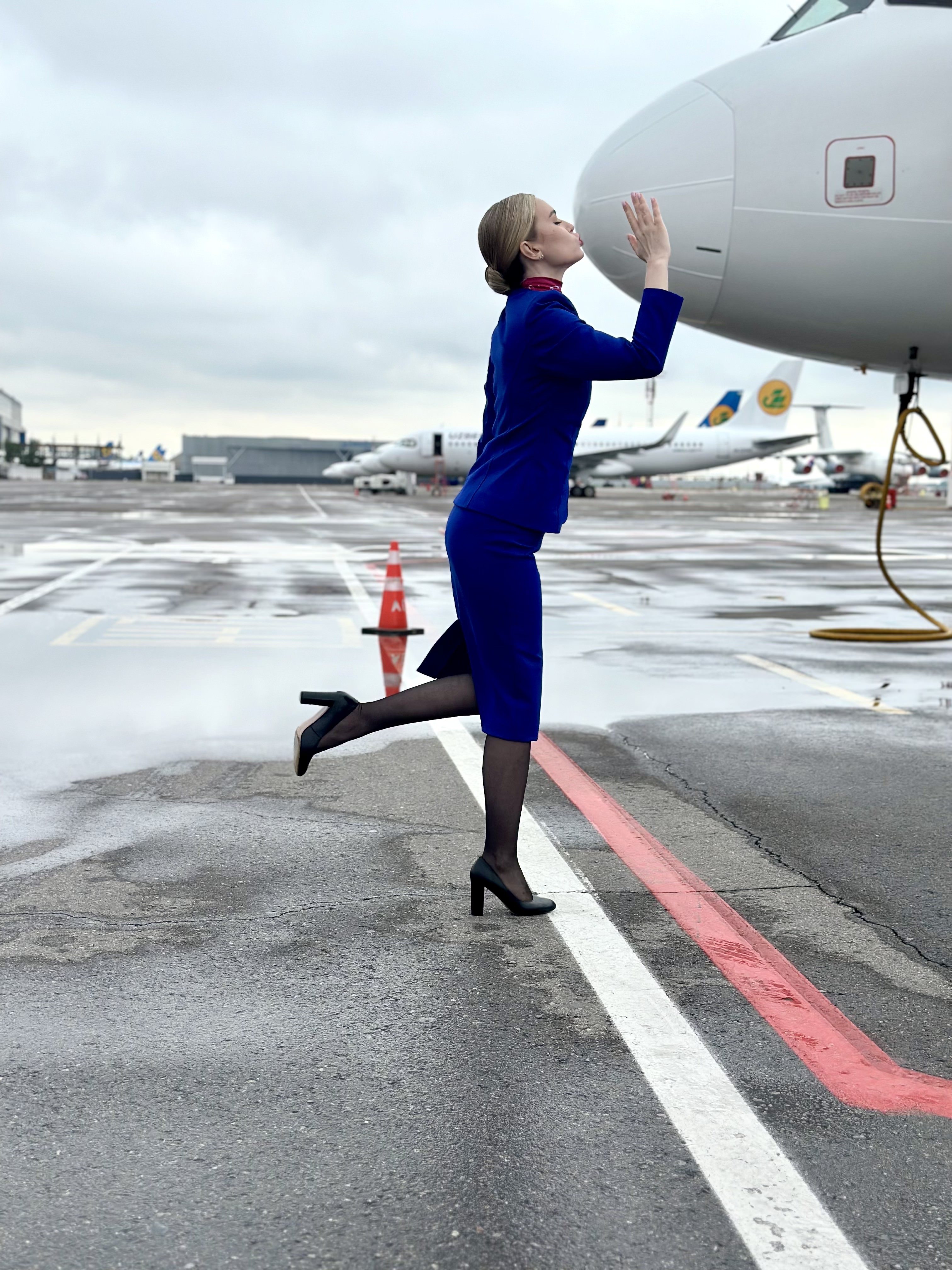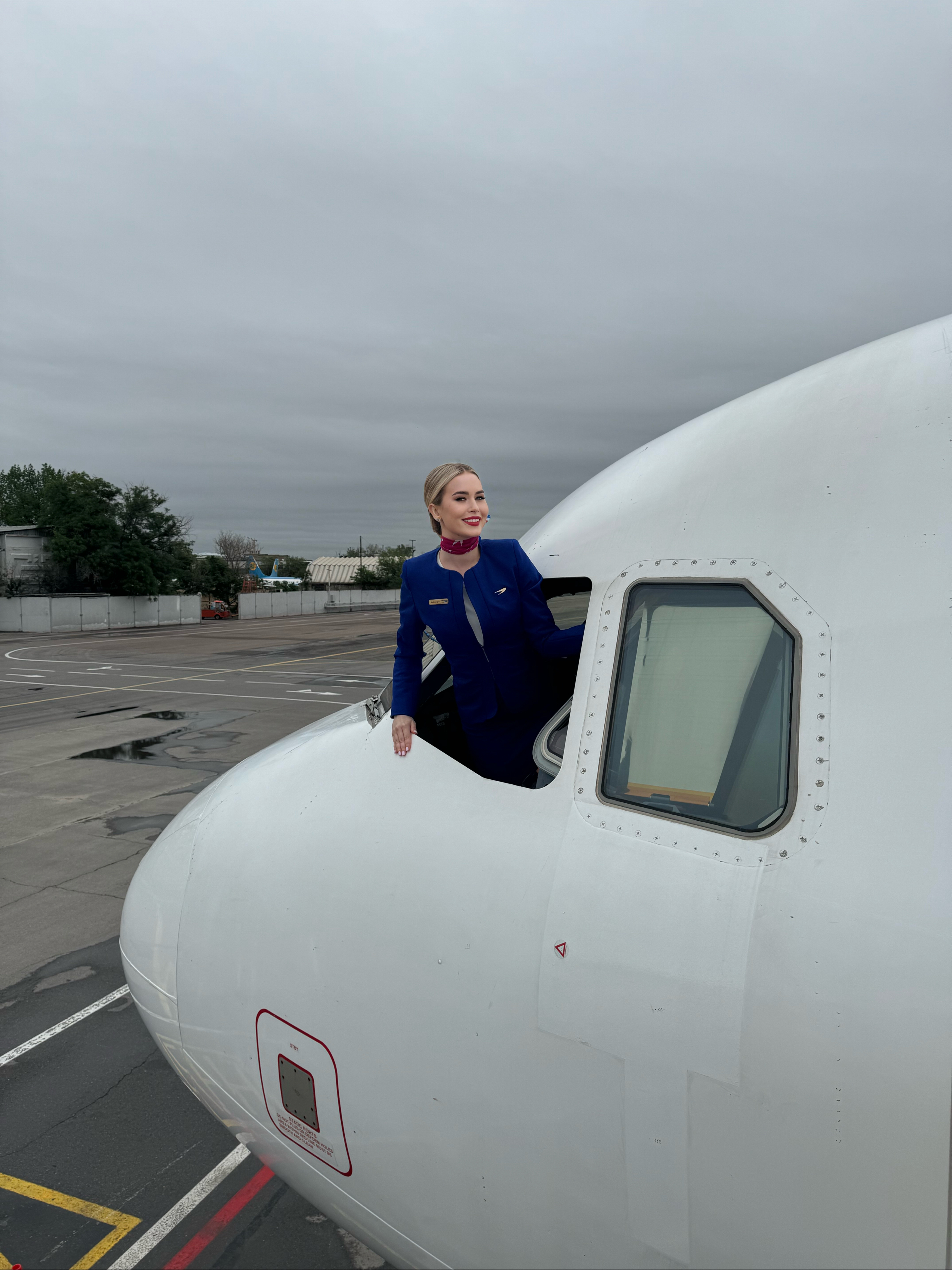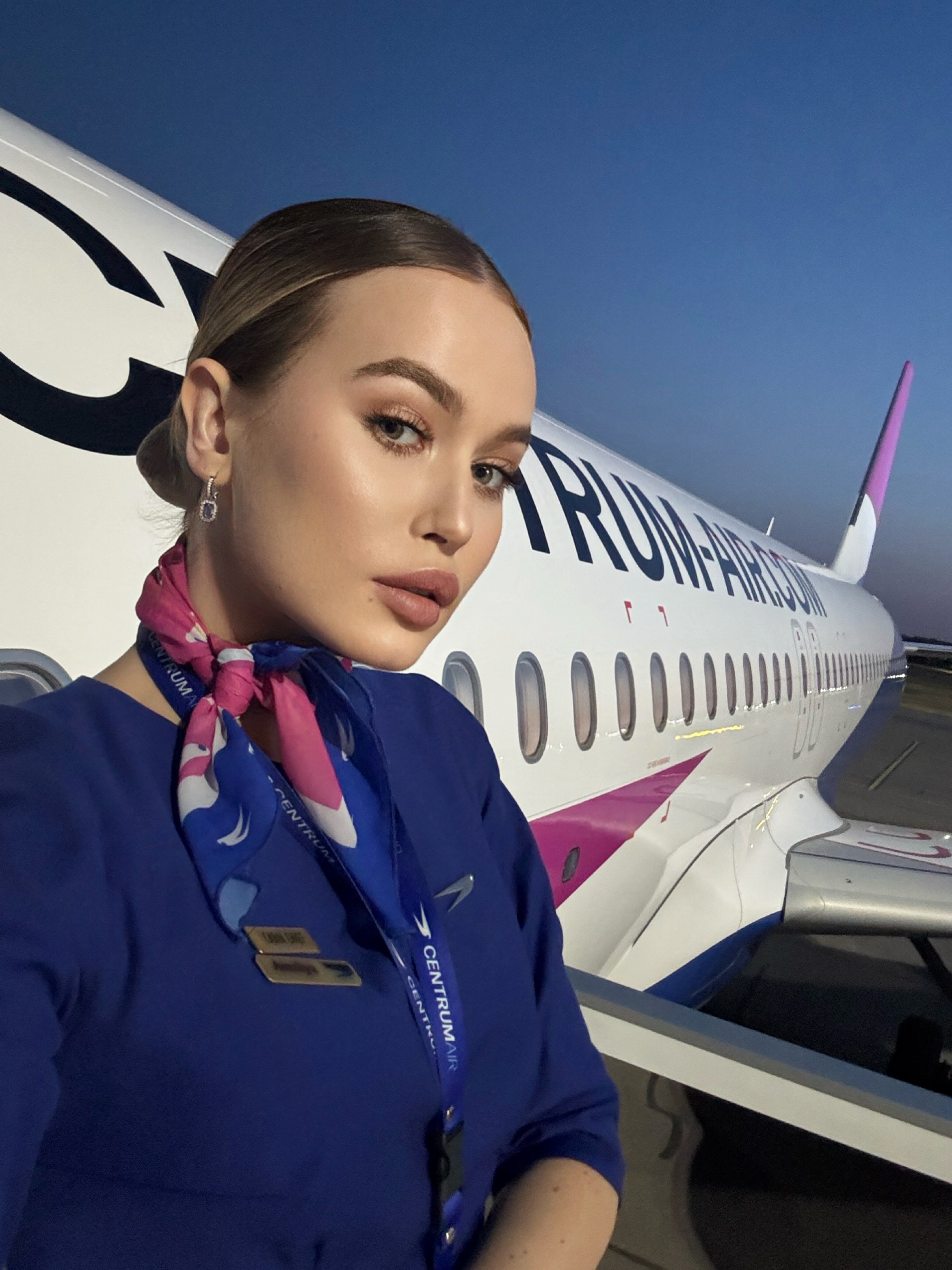
Aviation • 28 May, 2025
Behind the Scenes of a Flight
What is a flight to us? A way to cover thousands of kilometers – to see the ocean, sign an important deal, or reunite with loved ones after a long separation. But for some, it's the everyday reality of work – one that demands focus, vigilance, and serious preparation. We witness the care and support of flight attendants but rarely grasp what they face, how they handle stress, or how they prepare for takeoff.
We spent the pre-flight day with Amaliya Dushatskaya – a smart and graceful flight attendant at Centrum Air – and here’s what we observed.
Morning, Coffee, Introduction
Our meeting with Amaliya started light and relaxed. From the very first phrases, there was a sense of warmth, openness, and kindness – qualities that, as we discovered, are essential to the profession.

Amaliya shared her plans for the day: review flight details, refresh safety knowledge, and work on her personal blog content.
She showed remarkable focus and pragmatism. Upon meeting us, Amaliya opened the Meridian* app to check the upcoming flight's details: departure time, route, aircraft model, and crew list. This is crucial because the location of emergency equipment differs by aircraft type. Refreshing her knowledge is an integral part of preparation.
*Meridian.Crew App – a mobile platform for flight crews providing access to flight plans, manuals, and accelerating airline documentation.
Five hours before takeoff
That’s how long preparation takes. If the flight is in the morning, it all starts early – with coffee. Uniform and luggage are prepped in advance. Getting ready takes about two hours, followed by a personal ritual that has become a family tradition: in Amaliya’s bedroom, surrounded by aircraft models, stands a small Buddha statue that she rubs for good luck.
Another ritual takes place right before boarding: when entering the aircraft, she greets it. Some knock three times on the fuselage; Amaliya warmly whispers, “Hello, birdie.”
"Some dream of a Bentley – I dream of owning a plane".
The ride to the airport is short, but Amaliya leaves early to ensure she's on time. Then comes the pre-flight briefing, during which the crew reviews flight documents and discusses flight specifics – like turbulence, casually referred to by the crew as "the bumpy part."
Every flight attendant is then assigned duties with specific codes. One is responsible for doors, another for onboard inventory and forms, which must be handed over to the next crew when the plane changes hands.
Pre- and post-flight, all inventory and emergency gear are thoroughly checked. Amaliya speaks with particular reverence about how important it is for each attendant to carefully inspect their assigned zone.
"Everything must be timed to the second. Aviation requires strict adherence to rules – each one written in response to a past event. We follow them to make sure history doesn't repeat itself".
She offers a seemingly cinematic yet real example: the practice of checking boarding passes stems from passengers mistakenly boarding the wrong flight – and ending up on an unexpected journey.
Calming passengers is a key skill. Amaliya explained that sharing your fears with the crew is not only acceptable but encouraged. They’ll reassure you, answer questions, and offer care – especially if you suffer from aerophobia.
A dream come true
Amaliya’s path to becoming a flight attendant is a remarkable story of how chance can shape destiny.
"It wasn’t my lifelong dream. I originally aimed for a medical career and wanted to be a surgeon. But one person changed everything.
When I was 12, my mom, a cosmetic doctor, had a charming client. She was always impeccably dressed; I even saw her in uniform once or twice, and I still remember her perfume. I thought, 'She’s so beautiful!' My mom would ask if I wanted to be a flight attendant. It wasn’t a dream for me, but that image stuck.
I forgot all about it and went on to study in medical college. Years later, I came across an open call for flight attendants – and that image from my childhood came rushing back.
I knew the preparation would be intense: languages, geopolitics, geography – all needed to be top-notch. For six months, I studied daily. My schedule was packed to the minute.
The night before selection day, I booked makeup and hair appointments. On the big day, I woke up at 4 a.m., wore a skirt that resembled a flight uniform – I wanted to look like I already had the job. I remember every step clearly. The questions tested our knowledge, resilience, and attitude toward the role. When I found out I passed, I called my mom in tears and couldn’t believe it myself".
After the interview came health screenings – both physical and psychological. Many were filtered out by the psychological exam. A flight attendant must be calm, focused, responsible, empathetic, and a team player. In the air, nonverbal understanding is critical.
The job shapes you
"Since joining the profession, I’ve become more responsible and punctual. I always follow checklists and plan ahead. I’ve also become much more serious about my health – which is essential for us".
Professionalism extends into personal life, including wardrobe choices. Flight attendants undergo continuous training and health checks, which foster a disciplined mindset.
Amaliya’s personal stories revealed how vital it is to mentally disconnect from personal matters and focus fully on the job. No matter what happens before takeoff, a flight attendant must remain composed. The responsibility is immense – and there is always the option of replacement in case of emergencies.
We also touched on stereotypes: many think flight attendants are just servers. In truth, their main job is safety – providing first aid or even delivering babies if needed. The image of an airline heavily relies on flight attendants. Passengers notice how they look, speak, and respond. Our impressions are shaped by these details – from greetings to how attentively requests are handled. It’s about whether we feel like our comfort and safety are their top priorities. Importance lies in the details During prep breaks, Amaliya shares how aviation safety shows up in subtle ways. For instance, pilots eat different meals – to avoid both getting food poisoning. Family members aren’t placed on the same flight – because in an emergency, they might instinctively protect each other instead of passengers.
"Anything can happen, and we must be ready for every scenario".
Among flight plans and manuals, Amaliya also carries a notebook filled with ideas for her blog. On Instagram (@amaliya_dushackaya), she shares the lighter side of onboard life with humor. She also plans to film educational videos – like how and where to train as a flight attendant.
It’s always fascinating to peek behind the curtain and realize that the people who guide us through the skies are just like us. It was heartwarming to hear Amaliya speak of her team – how they support one another. This spirit shows in traditions like feeding stray cats abroad: Centrum Air crews often carry cat food and support local shelters.
In just a few hours of pre-flight preparation, we saw how deeply dedicated flight attendants are – and how much Amaliya truly loves her job. One thing became clear: no matter what happens, we, the passengers, will always be the top priority for the crew.



